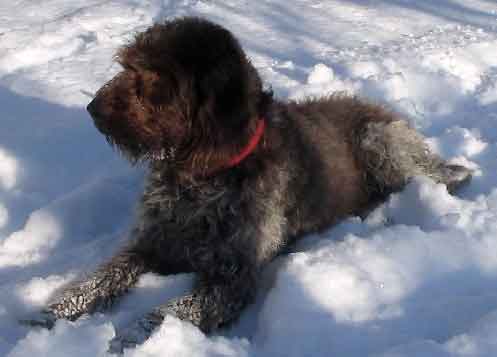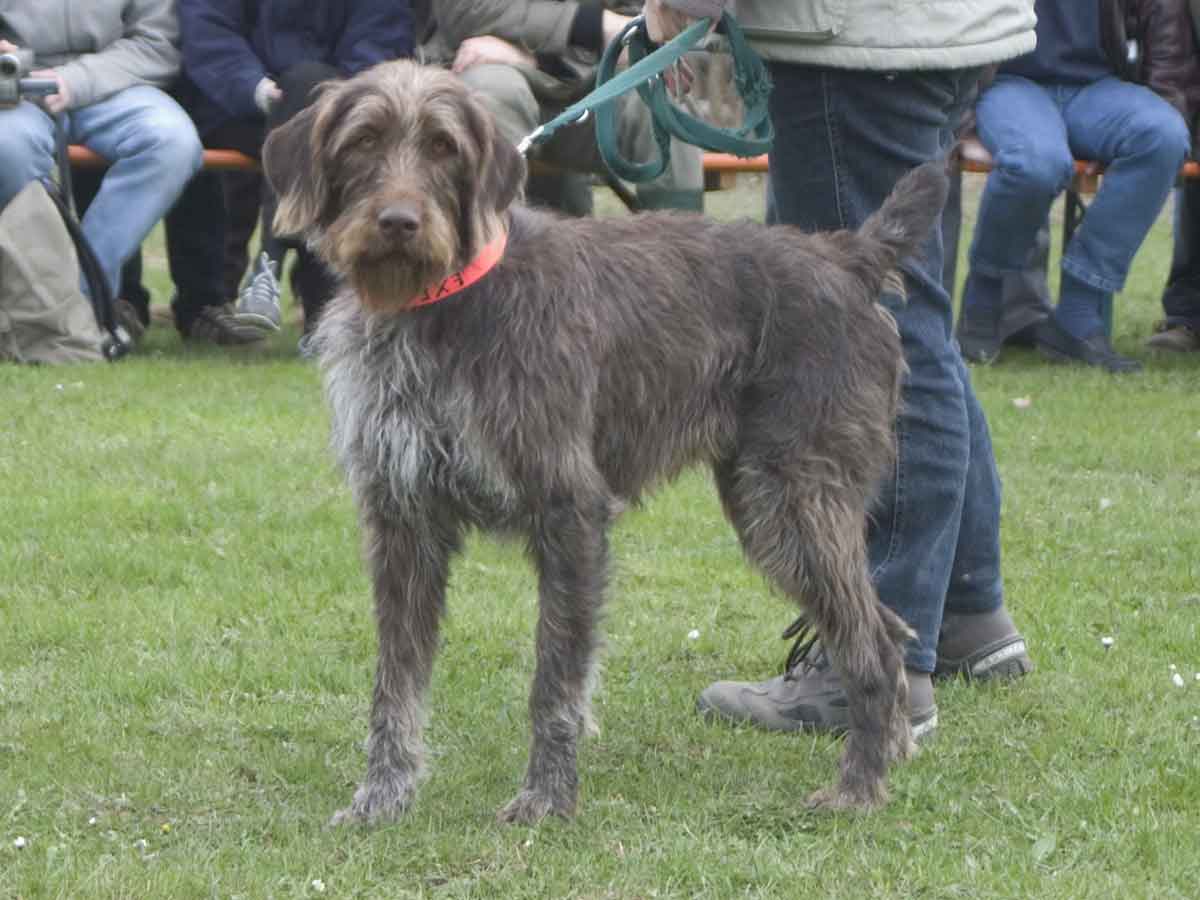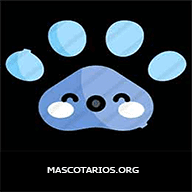Content |
|---|
History
The German Roughhaired Pointer It is the oldest breed of wire-haired dogs. The history of German Roughhaired Pointer goes back many hundreds of years. Already in 1539 this breed of dog could be admired in bronze engravings. In 1888 Hans Von Kaddisch showed that this breed is not a variety of the Shorthaired Pointer Dog, but the wire-haired counterpart of the Old German Wirehaired Pointer, and that it was selected and developed from rare surviving subjects that had survived in Germany.
The breed club, founded in 1892 as the “Club Stichelhaar“, changed his name to “Verein Deutsch Stichelhaar” in 1976. Since the beginning, has applied the rules of purebred breeding from the beginning, and excludes any crossing with the English breeds.
Photo: The german pointing dog Deutsch Stichelhaar by Alephalpha, CC BY-SA 3.0, via Wikimedia Commons
Physical characteristics

Males reach a withers height of 60 to 70 centimeters. Females are somewhat smaller, growing up to about 58 to 68 centimeters. The weight of a German Roughhaired Pointer it is usually between 20 and 29 kg.
The coat of this dog is hard and bristly. Is loose and has a moderate undercoat. The German Roughhaired Pointer comes in a variety of colors and patterns. They are often solid brown in color, or have a white patch on the chest. There are also light browns and grays. The dog's coat has a few 4 centimeters long.
The structure of this breed of dog is square and strong. He has a straight back line, leaning slightly towards the rump. The skull is widely built and slightly domed. The ears are smooth and hanging and have a high base. The appearance of the German Roughhaired Pointer reminds a German Wirehaired Pointer.
Character and skills
The German Roughhaired Pointer has a calm and balanced character. He is very easy to train and very willing to learn. His alertness and protective instincts are strong, but they can be controlled well.
The temperament of German Roughhaired Pointer it is usually quiet. Your temperament manifests when your abilities are nurtured through regular training. When you bring a German Roughhaired Pointer to your family, you have a new friendly roommate.
Your new pet is neither shy nor aggressive. If you keep your friend busy enough, will be a loyal companion. But, you must make it clear to him that you have the position of leader within the hierarchy. Only then will he be a loyal dog to you.
The German Roughhaired Pointer it is very popular with hunters. But, not suitable as a pure family dog. As this breed of dog is very self-confident, you should also be a strong leader.
Training
The natural instincts of German Roughhaired Pointer can be controlled well with proper training. The best way to do this is to train him to be a hunting dog.. The training of the German Roughhaired Pointer it is much more complex than that of other dogs. Just visiting a normal dog school is not enough. Usually the German Roughhaired Pointer it is only given to hunters for this reason.
Grooming
Health and Grooming
When it comes to grooming, the German Roughhaired Pointer it is similar to many other hunting dogs. So, the amount of grooming required is low. If you brush your four-legged friend's coat once a week, is perfectly enough. The German Roughhaired Pointer it is very robust in health. So, fortunately it is not very susceptible to disease.
Characteristics "German Roughhaired Pointer"
Coexistence is important that you have with your new friend. Before considering the acquisition of a dog of the breed "German Roughhaired Pointer" you know certain factors. Not all breeds of dogs are apt to live in an apartment, you must take into account his character, their need for exercise, their interaction with other pets, their care and if you have small children, their level of tolerance towards them.
Adaptation ⓘ3.0 out of 5 stars (based on 1 review)
|
friendly dog ⓘ4.0 out of 5 stars (based on 1 review)
|
hair loss ⓘ2.0 out of 5 stars (based on 1 review)
|
|---|---|---|
Affection level ⓘ5.0 out of 5 stars (based on 1 review)
|
Need for exercise ⓘ4.0 out of 5 stars (based on 1 review)
|
Social need ⓘ4.0 out of 5 stars (based on 1 review)
|
Home ⓘ2.0 out of 5 stars (based on 1 review)
|
Toilet ⓘ2.0 out of 5 stars (based on 1 review)
|
Friendly with strangers ⓘ3.0 out of 5 stars (based on 1 review)
|
barking ⓘ3.0 out of 5 stars (based on 1 review)
|
Health ⓘ3.0 out of 5 stars (based on 1 review)
|
Territorial ⓘ3.0 out of 5 stars (based on 1 review)
|
Cat friendly ⓘ2.0 out of 5 stars (based on 1 review)
|
Intelligence ⓘ4.0 out of 5 stars (based on 1 review)
|
Versatility ⓘ3.0 out of 5 stars (based on 1 review)
|
Child friendly ⓘ5.0 out of 5 stars (based on 1 review)
|
Surveillance ⓘ3.0 out of 5 stars (based on 1 review)
|
joy ⓘ4.0 out of 5 stars (based on 1 review)
|
Videos "German Roughhaired Pointer"
|
German Roughhaired Pointer
|
German Roughhaired Pointer
|
|---|
Type and recognitions:
- FCI CLASSIFICATION: 232
- Group 7: Pointing Dogs
- Section 1: Continental Pointing Dogs. 1.1 Braque Type. With proof of work..
Federations:
- – FCI – Group 7: Pointing Dogs. – Section 1: Continental Pointing Dogs. 1.1: Braque Type ⓘ
FCI breed standard "German Roughhaired Pointer"
Alternative names:
1. German Roughhaired Pointer , Stichelhaar (English).
2. Braque allemand à poil raide (French).
3. Stichelhaar (German).
4. (Portuguese).
5. Perro de muestra alemán de pelo cerdoso (español).

